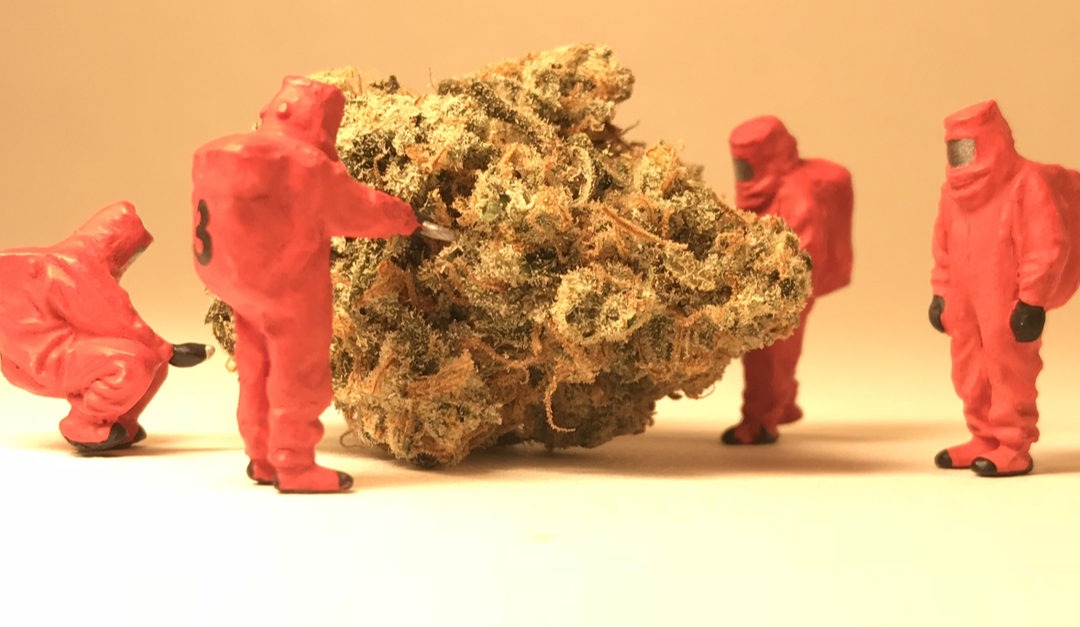No one argues that proper lab testing of food products is important and should be required for general public safety. However, in many legal medical cannabis states, there actually has to be a discussion as to whether medical cannabis should be tested at all, much less how extensive the testing it must undergo.
There are two general areas of cannabis testing: potency and contaminants.
According to my definition, potency can be characterized by the components of the cannabis plant (and their quantities) which provide a medical impact upon the patient. Using this definition, I consider both a cannabinoid profile and a terpene profile to be essential to characterizing the potency of the plant.
Cannabinoid profiles cannot be determined by any other way than testing by a qualified laboratory using trained personnel. You cannot simply tell the cannabinoid content by smelling or otherwise looking at the plant. Why is this important? In medical cannabis, patients are not looking to get high (simply high THC content). They are looking to heal from various ailments, such as pain, depression, anxiety, PTSD, etc. High THC contents do not always help a person but can be a detriment to them. However, higher CBD contents with a lower amount of THC, can sometimes provide a better treatment for a patient’s condition. However, make sure your cannabis grower/dispensary is using a laboratory that provides a minimum of a 10 cannabinoid profile. Other cannabinoids such as CBC, CBG, and CBN have their own positive medicinal qualities.
Terpene profiles can be just as important (if not more important) than the cannabinoid profile of the plant. Terpenes give cannabis its characteristic smell. However, different levels of varying terpenes can provide soothing, calming, energizing, and/or other medicinal qualities. Again, make sure your grower/dispensary is using a laboratory that provides a minimum of a 23 terpene profile to cover the major medicinal terpenes known today. These will include major terpenes such as linalool, myrcene, and caryophyllene. However, trace amounts of terpenes such as guaiol and nerolidol have been shown to have positive effects for certain disorders.
Contaminants consist of anything that could potentially be harmful to the medical cannabis patient. Typical contaminants include pesticides, heavy metals, mold/mildew, coliforms, and other toxins. In concentrates or other processed materials, residual solvents used in the process can be a concern.
Pesticides can sometimes be a necessary evil in order to knock out an infestation in a grow. Insecticides, herbicides, and fungicides can all be used successfully as long as the grower knows how to sufficiently flush the plant before harvest. Ingestion of pesticides can cause a myriad of unwanted side effects whether through combustion or digestion.
Heavy metals such as arsenic, cadmium, lead, and mercury can all cause harmful health effects as well. These typically originate from your water or soil source. Think to the recent Flint water crisis. Lead in the water could potentially have contributed to many different cancers and other health issues for residents of that city.
Mold/mildew is a common problem with cannabis that comes from improper curing of the cannabis plant. When moisture levels are consistently above 13-15%, then cannabis readily develops mold/mildew and other fungal problems. These toxins are generally not safe to consume.
Coliforms are present everywhere. Contamination on cannabis can come from improper handling, such as handling of plant material without the proper use of gloves. E. Coli is constantly in the news for the problems caused in the food industry.
For most extractions, short of a mechanical extraction, some sort of solvent must be used. Even in CO2 applications, ethanol is typically used to winterize the concentrate. Solvents are not evil, however, laboratory testing will assure the patient that they have been removed to safe levels.
In short, be aware from whom you are purchasing your medicine. Watch them. If they are handling your medicine without the use of gloves, refuse to buy. If they don’t have cannabinoid, terpene, and contaminant results readily available, refuse to buy. Ask questions. If they don’t know or don’t seem to care, refuse to buy. Your health is in your hands and you should take control of the medicine you put in your body.
References
- https://www.medicalnewstoday.com/articles/270609.php
- https://dengarden.com/gardening/Common-Diseases-of-Leafy-Vegetables-Prevention-and-Treatment
- https://www.isleofmarijuana.com/product-category/marijuana-flowers/
- https://www.westword.com/news/medical-marijuana-guide-to-mold-mildew-and-mites-will-help-you-discover-whats-in-your-ganja-5897495
